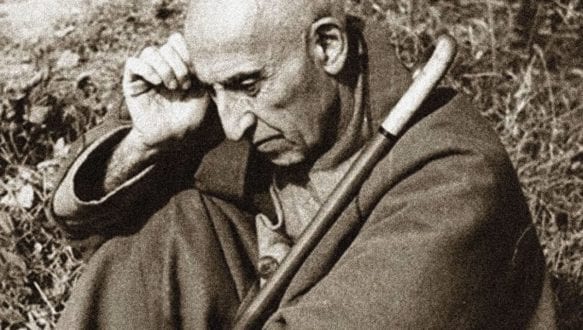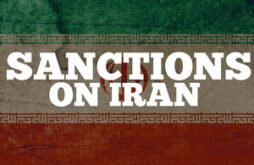Radiofarda – In the early morning hours of August 16, 1953, Colonel Nematollah Nassiri, the commander of the Imperial Guard, delivered a decree hand-signed by Mohammad Reza Shah Pahlavi to the office of the Prime Minister, Mohammad Mosaddegh. It was an order for the Prime Minister’s dismissal. Hours earlier, Nassiri had handed over another signed order from the Shah to Major General Fazlollah Zahedi, according to which Zahedi was appointed Prime Minister. Fearing the forces loyal to Mosaddegh, Zahedi had been hiding in a safehouse.
Mosaddegh did not accept Nassiri in person and instead, ordered Colonel Momtaz, who was part of the Prime Minister’s Office’s Security Guard, to take the order from Nassiri and bring it to him. He then read the letter, didn’t utter a word, put it in the drawer of his desk, and wrote on a piece of paper, “I received Your Majesty’s correspondence at one o’clock in the morning on August 16, 1953. Dr. Mohammad Mosaddegh.”
He handed the paper over to Momtaz to give back to Nassiri. He then calmly ordered the arrest of Nassiri, who was sitting in the other room drinking tea (Houchang Nahavandi 2013).
The Shah with foresight hadordered the dismissal of Mosaddegh and the appointment of Zahedi from his Kelardasht villa. Nassiri was tasked with delivering the order in-person to the Prime Minister in Tehran. At around 4 in the morning, the Imperial Guard reported to the Shah that the mission assigned to Colonel Nassiri had been unsuccessful.
The Shah immediately awoke Empress Soraya and informed her that they had to depart. Kelardasht did not have an airport. Only a flat empty lot was available for landing and takeoff of small aircrafts. The Shah and the Empress boarded a small plane with Major Khatam (Royal Pilot and Future General) and flew to Ramsar.
At around 6 am, they flew from Ramsar to Baghdad on Shah’s dual engine aircraft. In Baghdad, King Faisal received him with reverence. The Shah stayed in Iraq for only one day, and after a brief pilgrimage to Imam Hussein’s shrine in Karbala, he flew to Rome (quoted in the previous reference).
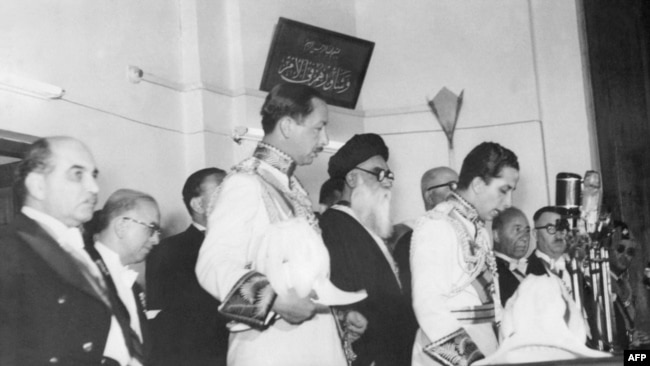
Overcast Conditions
The Shah had never imagined a day in which he would be forced to order the removal of his Prime Minister in the dead of the night and be stripped of safety and security in his own country.
In history, the origin of no event is simplistic and conspicuous because every starting point has its own antecedent. In the first 12 years of his reign, the young Shah, who was educated in Europe and had a Swiss upbringing, did not rule as an absolute ruler by any means and the constitutional monarchy worked by and large. Some may argue that somewhat similar to European kings, at the time the Shah viewed himself as merely a symbol of national unity and guardianship and tasked with safeguarding the proper implementation of the constitution. Yet, maintaining such a delicate balance was not that straightforward, as Iran was not Europe.
His reign began with the Allied occupation of Iran at the height of World War II. With the help of savvy statesmen like Mohammad Ali Foroughi, the young Shah got an official commitment from the occupying Allies to leave Iran within 6 months after the end of war. This was not so hard to do since for the West this was a tactical move to force the Soviets out of northern Iran. The United States and Great Britain fulfilled their commitments, but the Soviet Union had no intention of leaving Iran so easily. In Tehran and throughout Iran, communists formed the Tudeh Party, which did not hide its admiration for the “Great Leader” and Comrade, Joseph Stalin. The TudehParty’s branches were especially active in Kurdistan and Azerbaijan provinces, which at the time were occupied by the Red Army. Indeed, party members formally convened under Vladimir Lenin and Stalin’s wall portraits. They declared Iran a “multinational” state, and launched campaigns and provocations to free the Iranian “nations” from “Tehran’s tyranny.”
In Azerbaijan, the Azerbaijan Democratic Party, founded by Ja’far Pishevari, declared autonomy and effectively disarmed and occupied the military barracks and forts of the Imperial Iranian Army. In a very small section of Kurdistan, Qazi Mohammad declared the “Republic of Mahabad.” Eventually, Prime Minister Ahmad Qavam (Qavam al-Saltaneh) used clever diplomacy and took advantage of the growing rift between the Soviet Union and the United States to checkmate Stalin. The Red Army subsequently withdrew from Iran in 1946 and in due course, the separatist pandemonium subsided (Jahanshahlou, 2006). In 1949, a member of the Tudeh Party made an assassination attempt against the Shah. Five shots were fired at Iran’s monarch, two of which hit him: one in the face and the other in the back. He miraculously survived and recovered quickly (Mohammad Reza Shah, Mission for my Country, 1961).
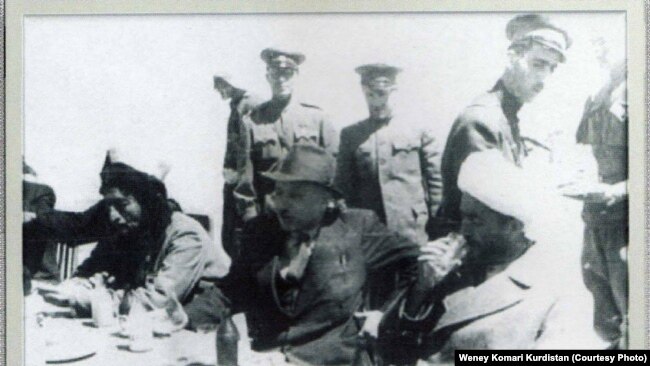
The Rain Before the Storm
Another crisis was brewing; this time over petroleum. In 1949, Iran’s then Minister of Finance, Abbas Gholi Golshaeian, signed a draft adjunct contract with the Anglo-Iranian Oil Company (formerly Anglo-Persian Oil Company), which gave some concessions to Iran and increased Iran’s share of the oil. However, some Iranian parliamentarians did not consider it sufficient, and the agreement was not going to be official unless ratified by the Iran’s Parliament.
In 1950, General Haj Ali Razmara was elected Prime Minister and charged with sorting out the oil industry and the agreement that was in a standstill. Razmara’s belief was that when Iran lacked the most rudimentary technical and managerial expertise to explore, extract, refine, and export petroleum, nationalizing the oil industry was little more than an empty slogan.
Mosaddegh deeply resented Razmara. As a member of the Parliament, he once threatened Razmara’s life in an angry outburst amidst an official parliamentary session: “God is witness, even if we are killed, even if we are shredded into threads, we shall not submit to the rule of such a person (Razmara). We shall shed blood and we shall spill blood. If you (Razmara) are a soldier, I am more militant. I will kill you right here.” Razamara was taken aback by Mosaddegh’s threat and pointed out to him that despite his vast wealth and influence as a Qajar prince, he had done very little to help the poor in Iran.
Only a few months after this confrontation, Razmara was assassinated. On March 7, 1951, Khalil Tahmassebi who was a member of the Devotees of Islam – an Islamist terrorist faction founded by a theology student named Navvab Safavi – shot and killed Prime Minister Razmara with 3 bullets at the Shah Mosque in Tehran. By this time, relations between Mosaddegh’s National Front and the Devotees had warmed up. At a private meeting with Safavi held shortly before Razmara’s assassination, most members of the National Front agreed on behalf of Mosaddegh that any political decision made in that congregation would be unconditionally binding (Memoir of Ezzatollah Sahabi 2009).
After Razmara’s assassination, Seyyed Hossein Fatemi, Mosaddegh’s associate, confidant, and Foreign Minister wrote an editorial in Bakhtar-e Emrooz newspaper in praise of the slaying. He boasted that “selfless militant youth” were willing to “remove the stains of disgrace,” even at the cost of their own blood.
The Thunders
Shortly after Razmara’s assassination, Mosaddegh became Prime Minister. Initially, he enjoyed the majority’s support in the Parliament. One of the first pieces of legislation that Mosaddeghand his allies in the Parliament passed was to officially pardon Tahmassebi — who had been arrested at the scene of Razmara’s murder — and facilitate his release from custody. The legislation contended Razamara had committed treason against the nation and hence his elimination was justified. It further obliged the government to financially provide for Tahmassebi’s “comfort and livelihood” for the rest of his life.
Subsequently, Tahmasebi was released from prison, recognized as a national hero, and received a steady stipend from the Mossadegh administration. The Ettela’at newspaper reported on Sunday, October 27, 1952 that “Mr. Tahmassebi has met with the Prime Minister, Dr. Mohammad Mosaddegh.”
Although there is no evidence of Mossadegh’s personal involvement in ordering the assassination of Razamara, the actions of his political block in condoning the killing made him politically responsible. However, this did not stop him from pursuing his agenda.
He was hardly content with nationalizing Iran’s oil industry alone, an endeavor that was looked upon favorably by the Shah himself. Mosaddegh had more ambitious and controversial goals in mind. With the passage of the act to take over the Abadan Refinery and other assets of the Angelo-Iranian Oil Company, Mosaddegh sought to expel all British engineers, managers and technicians from Iran. This action effectively shut down Iran’s oil industry on the one hand, and at Britain’s instigation, led to international sanctions on Iran on the other. Furthermore, all of Iran’s shares of the Anglo-Iranian Oil Company outside the country were lost.
Mosaddegh would not consent to any agreement or overture meant to arbitrate between Iran and the British. He even rejected a proposal by the United States to a 50/50 share of the profits between the Iranian government and the Anglo-Iranian Oil Company. Mosaddegh feared that accepting any agreement with the West would be viewed by his comrades as submission to Western colonialism. Given his rigid posture and being left with little options, Mosaddegh’s government acquiesced to sell oil to China’s communist government at a fraction of the market value. A major obstacle, however, was transporting the petroleum to China. China did not have oil tankers; most of the world’s tankers at the time belonged to Britain. Other countries that owned tankers were reluctant to transport Iranian oil fearing secondary sanctions and the possibility of upsetting their partnership with Britain.
Due to sanctions and the closure of the oil industry, Iran’s economy suffered a deep recession and the value of Iran’s national currency fell by a third. To resolve the crisis, Mosaddegh’s government began issuing national bonds. However, when the sale of those bonds proved inadequate, he illegally and without collateral began printing money, bypassing the Parliament’s consent and without consultation with National Bank’s economists. As a result, the economy fell from recession to inflationary recession.
The already-dire situation escalated to a point at which Mosaddegh was in war with all the branches of the constitutionalist system. Concurrent with his role as the Prime Minister, he took over the Ministry of War to expand his influence over the military. He suspended the highest judicial authority in Iran, the Supreme Court, and dismissed high-ranking judges. He placed so much pressure on the Shah until he obtained the Shah’s consent to dissolve the Senate. Although early in his term as Prime Minister, he had made a steadfast commitment to freedom of press – even when he was the target of criticism and insults – Mosaddegh later requested and was given special authority by the Parliament to penalize newspapers. Even more egregious, Mosaddegh organized a battalion of thugs who were occasionally dispatched to newspaper bureaus to vandalize the property and intimidate employees (Memoirs of Shaban Jafari, 2002).
The Gathering Storm
Eventually, internal and external crises converged to a juncture at which the same Parliament that had elected him Prime Minister began to vehemently oppose him. He also lost the support of his longtime ally, Ayatollah Abol-Qassem Kashani, a hardline cleric with anti-imperialist and anti-colonial leanings. Mosaddegh’s relationship with members of Parliament became so strained that he often avoided attending the National Assembly and communicating with lawmakers (Ali Mirfetros 2008).
Mosaddegh predicted that the National Assembly would soon dismiss him and decided to preemptively dissolve the Parliament. According to the constitution of Iran at the time, the Prime Minister did not have the authority to dissolve the Parliament, from which he received his legitimacy. Moreover, in the history of Iran after the Constitutional Revolution of 1906, there was never an instance wherein a Prime Minister would dissolve the Parliament.
Many of his advisors and staunch supporters warned him about this decision. Parliament Speaker Abdollah Moazami, who was close to Mossadegh, strongly opposed the dissolution of the Parliament and urged Mosaddegh to resolve his differences with lawmakers through mediation.
Mosaddegh undermined an important tradition in the constitutional system of Iran according to which the Shah had the authority to dismiss and replace the Prime Minister during an interregnum, when the Parliament did not exist. Ahmad Shah Qajar had previously used this privilege in extended periods of time when there was no Parliament due to war or other crises. During World War I, Ahmad Shah dismissed and installed a dozen Prime Ministers in the course of an interregnum lasting 6 years, from 1915 to 1921.
Many more friends and supporters of Mosaddegh warned him against his decision to dissolve the Parliament. Another member of the Parliament and ardent ally of Mosaddegh, Karim Sanjabi, visited him at his residence and cautioned him that if he dissolves the Parliament, he may face dismissal by the Shah or potentially a coup d’état. According to Sanjabi, Mosaddegh told him that the Shah lacked the courage to dismiss him and in case of a coup, he had the people’s unconditional support. He then angrily expelled a stunned Sanjabi from his house (Homayoun Katouzian, BBC Persian, 2014).
Overall, Mosaddegh was aware of the Shah’s legal authority to dismiss him during an interregnum, but largely relied on the belief that he was a national hero and hence the Shah did not dare to dismiss him.
In any case, Mosaddegh had made his decision and in early August 1953, held a referendum for dissolution of the Parliament. Neither the Parliament nor the Shah had approved this referendum. Moreover, the method for conducting the vote was outlandish. Not only were the ballot boxes for “yay” and “nay” votes separate, but even the precincts for each vote were different. In other words, to vote “yay,” one had to go to one location in the city; and to vote “nay,” he was to travel to another. Subsequently, the anonymity of the voting process, which is the foundation of democracy, was completely violated.
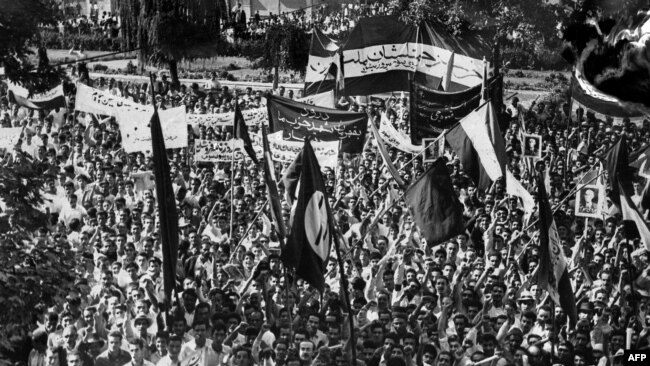
The Storm
Let us go back to the beginning of the article. After Mosaddegh arrested the messenger, Colonel Nassiri, he gave the necessary orders and instructions to Army Chief of Staff Brigadier General Riahi who was appointed by and loyal to him. He then went to bed. He woke up around 6 in the morning and summoned the director of the national radio, telling him that he had been removed from the post of Prime Minister and wanted to convey his last message to the people before departure.
A short message was recorded in which Mosaddegh informed the Iranian people that he had been dismissed by the Shah and asked them to take their fates into their own hands. Yet, the message was never broadcast. Meanwhile, Fatemi and several other loyal supporters of “The Leader” arrived in haste and inquired about the incident. Fatemi who was the most zealous of the bunch protested strongly against Mosaddegh’s decision to resign and told him he is the legitimate Prime Minister and no one can dismiss him. And so began Mosaddegh’s rule as de facto Prime Minister and ruler of Iran without the approval of the Shah or the Parliament.
It was there and then that a decision was made to conceal the Shah’s order of dismissal from the public, as well as from Mosaddegh’s cabinet ministers. Instead, they threw in a red herring. At approximately 7 am, a government statement was broadcast on national radio announcing that the previous night, a coup orchestrated in the Shah’s absence by some members of the Imperial Guard had been thwarted.
From that day on, Mosaddegh’s supporters split into two factions: the more radical group, led by Fatemi, officially declared the Shah a traitor and demanded his official removal, the end of the constitution, and establishment of a republic. Fatemi took part in several large demonstrations with the TudehParty between August 16 and 18, believing it was imperative that the National Front and Mossadegh unite with the TudehParty to establish a republic. During those demonstrations, large statues of Reza Shah and the young Shah, which had been erected in Tehran’s major squares, were pulled down. Fatemi even suggested Mosaddegh arm members of the Tudeh Party to maximize manpower and use lethal force if necessary. As Mosaddegh’s Foreign Minister at the time, Fatemi also instructed the Iranian Embassies in Iraq and Italy not to let any of the officials greet the Shah and to inform the two host countries that he should be treated as a deposed king. By order of Fatemi, photos of the Shah were taken from all government offices and ministries throughout Iran.
A more moderate faction of Mosaddegh’s allies opposed the republic and sought to form a royal council to replace the Shah. They feared the prospect of Iran’s annexation by the Soviet Union with the help of the Tudeh Party, and believed that proclamation of a republic was tantamount to the Tudeh Party taking over the country’s rule (Houchang Nahavandi, 2013). Mosaddegh himself was in this category. But with respect to exercise of power, the more extremist group led by Fatemi was in charge, as Mosaddegh himself was ill and resting at home.
In those tumultuous days when the news of the Shah’s sudden departure from Iran was spreading like wildfire, a climate of uncertainty was pervasive. In the afternoon of August 18, the inflammatory atmosphere reached its peak. Two proceedings, however, turned the course of events. One, General Zahedi succeeded in making thousands of copies of the Shah’s hand-written and signed order which appointed him as the new Prime Minister and distributed them to the public. Two, a group of bazaar elders sent a message to Grand Ayatollah Hussein Boroujerdi, who was at the time the most prominent Shia authority (Marja’) and rarely interfered in political matters. Based on this communiqué, Boroujerdi recognized that with the way events were unfolding, the country was in the imminent danger of falling into the hands of the Tudeh Party.
He therefore backed the constitutional monarchy, endorsed Zahedi as the legitimate Prime Minister, and allowed bazaar merchants to close their shops and join the protests against Mosaddegh. In addition, a group gathered around the residences of two influential Tehran clerics – Ayatollahs Kashani and Mohammad Behbahani – and from there, marched to seize government offices that were held by Mosaddegh loyalists. Interestingly, Behbahani and Kashani who were bitter rivals had put aside their antagonism and united over their mutual fear of the Tudeh Party taking over the country.
It was not just the traditional bazaar elites and the clergy who were concerned that in absence of the Shah, Mosaddegh may lose control or capitulate to the communists. At the peak of the Cold War era, the West led by the United States could not stay neutral for too long. At the initial stages of the oil crisis in Iran, the US had resisted Britain’s pleas to openly oppose Mosaddegh. However, as the crisis became more volatile and Mosaddegh’s popularity within certain factions of the Iranian society declined,the US administration under the Republican President Eisenhower joined Britain’s Winston Churchill in advocating for Mosaddegh’s dismissal or overthrow. Afterall, with Iran’s massive oil resources and the long borders with the Soviet Union, the US could not risk a destabilized or communist-controlled Iran.
For months, American and British envoys tried persuading the Shah to dismiss Prime Minister Mosaddegh. However, as long as the Parliament had not been dissolved by Mosaddegh, the Shah resisted their requests. The envoys also lobbied with an increasing number of dissatisfied and demoralized Iranian army officers and Generals, giving them assurance that as long as they stay united in opposing Mosaddegh and backing the Shah, they could count on the support of the Western allies. There is also some evidence that the Western envoys contacted several influential clergymen and bazaar elders to assure them of the West’s support for the Shah in opposing Mosaddegh. Shortly after Mosaddegh dissolved the Parliament, the Shah seized the opportunity to officially dismiss Mosaddegh and appoint General Zahedi as the new Prime Minister. The Shah took the risk as he believed that he had the support of some bureaucrats, the bazaar elders, many influential clergymen, the army, and the Western allies behind him.
The Shah’s gamble did pay off eventually, albeit with a few days of delay. Various wings of the armed forces that had encamped in or around Tehran refused to recognize and obey Mosaddegh. When the Parliament was dissolved and the Shah was absent, they saw no reason to follow the orders of a deposed Prime Minister. Pledging allegiance to Mosaddegh also meant confronting fellow servicemen who remained loyal to the Shah and his new Prime Minister, General Zahedi. This would have led to a civil war and widespread bloodshed in Tehran.
The only wing of the armed forces that took practical steps in support of Mossadegh was the Prime Minister’s Residence Guard. A large crowd of Tehran residents gathered around Mosaddegh’s house to seize the main base of the government. The Guard opened fire on the crowd and resisted for several hours. Nearly 40 people, mostly civilians, were killed by Mosaddegh’s Guard (Same as previous reference).
Finally, at around 4:30 pm on August 19, Brigadier General Nosratollah Fooladvand went to Mosaddegh’s residence to advise him that any further resistance was futile and would only lead to more bloodshed. He warned Mosaddegh that resisting surrender would further anger the protesters who may eventually kill him. He called on the deposed Prime Minister to issue a statement announcing the end of his defiance. Mosaddegh, who was bedridden and ill, finally gave in. As a sign of surrender, a piece of Mosaddegh’s white bed sheet was hung above the entrance of his home. He then surreptitiously escaped from the backdoor.
And so, the coup that had begun on August 16 was thwarted on August 19. Mosaddegh’s supporters later called the three-day saga, “the American-backed coup d’état of August 19.”

The Aftermath
Mosaddegh went into hiding. After a few days, the government of General Zahedi made an official plea to Mosaddegh to turn himself in to proper authorities. Zahedi further promised Mosaddegh that his safety was guaranteed and that he would receive the respect deserving of a former Prime Minister. Mosaddegh sent a reply informing Zahedi that he was prepared to surrender. Zahedi warned military officers and staff that anyone who made the slightest unmannerly gesture towardsMosaddegh would be prosecuted by military court and may face the firing squad. A stern military man, Zahedi was not one whose orders were taken lightly by his subordinates. When Mosaddegh surrendered, the soldiers greeted him with military salute and he shook their hands. Zahedi likewise greeted him with the utmost respect (Same as previous reference).
At his trial, Mosaddegh’s infractions were limited to the three days in which he had defied the Shah’s order of dismissal. According to the law, only the Supreme Court could try the Prime Minister and cabinet ministers for breach of duty; the military court lacked such authority. But the military court argued that from August 16 to 19, Mosaddegh was already dismissed and no longer enjoyed the legal privileges of a Prime Minister. At the end, Mosaddegh was sentenced to three years in a private prison in a military barrack, after which he was exiled to his home village of Ahmadabad – 100 kilometers west of Tehran, until his death in 1967.
Deep within, Mosaddegh was a nationalist, but surrounded himself with people who were too close for comfort to the Tudeh Party and by association, the Soviet Union. The ambiguous notion that Mosaddegh was “democratically-elected” stems from the referendum he held for dissolution of the Parliament, in which 99.94% voted in favor. Otherwise, under the parliamentary constitutional monarchy of Iran at the time, no Prime Minister was ever elected. They were all appointed or recommended by the Shah and approved by parliament. Abbas Milani argues that Mosaddegh’s referendum had no legal basis and because it had breached the fundamental requirement of a secret ballot, its legitimacy has always been questioned. For that reason, the actual coup d’état was conceivably plotted and executed by Mosaddegh against the Shah, not the other way around. In essence, those three fateful days constituted a coup that failed.
The opinions expressed by the authors do not necessarily reflect the views of Radio Farda
- Shervan FashandiDr. Shervan Fashandi is a political analyst and senior financial consultant based in New York. He serves as a board member of Iranian Americans for Liberty, a political advocacy and research group focused on international policy towards Iran. Dr. Fashandi is a memberof the Constitutionalist Party of Iran (Liberal Democrat). FOLLOW SUBSCRIBE
- Reza BehrouzDr. Reza Behrouz is an Iranian-American physician and medical researcher in Texas. He serves on the advisory board of Iranian Americans for Liberty and is a memberof Constitutionalist Party of Iran (Liberal Democrat).
 Shabtabnews In this dark night, I have lost my way – Arise from a corner, oh you the star of guidance.
Shabtabnews In this dark night, I have lost my way – Arise from a corner, oh you the star of guidance.
